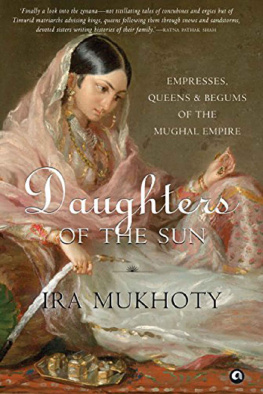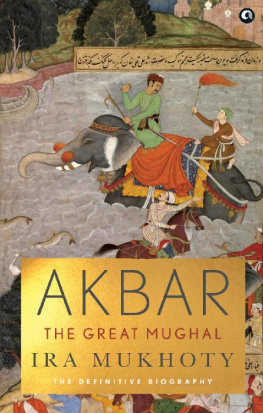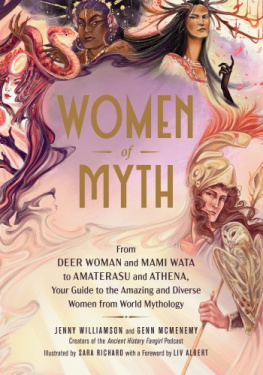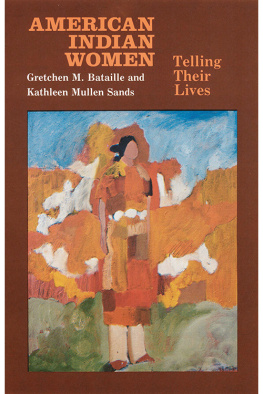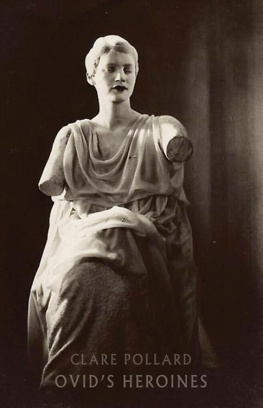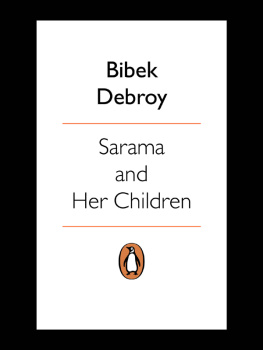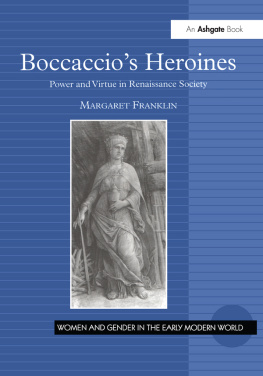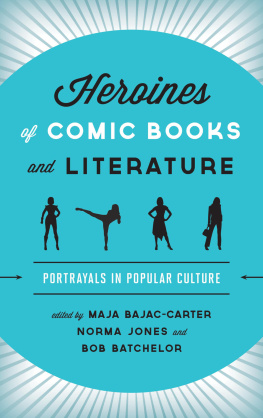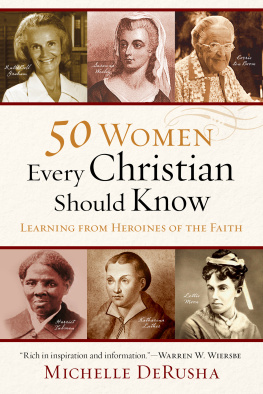Ira Mukhoty - Heroines: Powerful Indian Women of Myth and History
Here you can read online Ira Mukhoty - Heroines: Powerful Indian Women of Myth and History full text of the book (entire story) in english for free. Download pdf and epub, get meaning, cover and reviews about this ebook. year: 2017, publisher: Aleph Book Company, genre: History. Description of the work, (preface) as well as reviews are available. Best literature library LitArk.com created for fans of good reading and offers a wide selection of genres:
Romance novel
Science fiction
Adventure
Detective
Science
History
Home and family
Prose
Art
Politics
Computer
Non-fiction
Religion
Business
Children
Humor
Choose a favorite category and find really read worthwhile books. Enjoy immersion in the world of imagination, feel the emotions of the characters or learn something new for yourself, make an fascinating discovery.

- Book:Heroines: Powerful Indian Women of Myth and History
- Author:
- Publisher:Aleph Book Company
- Genre:
- Year:2017
- Rating:5 / 5
- Favourites:Add to favourites
- Your mark:
- 100
- 1
- 2
- 3
- 4
- 5
Heroines: Powerful Indian Women of Myth and History: summary, description and annotation
We offer to read an annotation, description, summary or preface (depends on what the author of the book "Heroines: Powerful Indian Women of Myth and History" wrote himself). If you haven't found the necessary information about the book — write in the comments, we will try to find it.
Heroines: Powerful Indian Women of Myth and History — read online for free the complete book (whole text) full work
Below is the text of the book, divided by pages. System saving the place of the last page read, allows you to conveniently read the book "Heroines: Powerful Indian Women of Myth and History" online for free, without having to search again every time where you left off. Put a bookmark, and you can go to the page where you finished reading at any time.
Font size:
Interval:
Bookmark:
HERO INES


ALEPH BOOK COMPANY
An independent publishing firm
promoted by Rupa Publications India
First published in India in 2017
by Aleph Book Company
7/16 Ansari Road, Daryaganj
New Delhi 110 002
Copyright Ira Mukhoty 2017
All rights reserved.
The author has asserted her moral rights.
The views and opinions expressed in this book are the authors own and the facts are as reported by her, which have been verified to the extent possible, and the publishers are in no way liable for the same.
No part of this publication may be reproduced, transmitted, or stored in a retrieval system, in any form or by any means, without permission in writing from Aleph Book Company.
ISBN: 978-93-84067-49-6
1 3 5 7 9 10 8 6 4 2
This book is sold subject to the condition that it shall not, by way of trade or otherwise, be lent, resold, hired out, or otherwise circulated without the publishers prior consent in any form of binding or cover other than that in which it is published.
For Yashoda and Devaki
The genesis of this book
Whenever someone who knows you disappears, you lose one version of yourself. Yourself as you were seen, as you were judged to be. Lover or enemy, mother or friend, those who know us construct us, and their several knowings slant the different facets of our character like a diamond-cutters tools. Each such loss is a step leading to the grave, where all versions blend and end.
Salman Rushdie, The Ground Beneath Her Feet
CONTENTS
INTRODUCTION
In the middle of the Bay of Bengal there lies an archipelago of serene islands, somnolent in the sun. On a recent visit, I discovered that all is not what it seems, for the Andaman Islands are home to man-eating saltwater crocodiles, a handful of aboriginal tribal hunter-gatherers, and a pervasive and baffling nostalgia for the crumbling ruins of the Raj. In the late-nineteenth century, the British built the infamous Cellular Jail in the Andaman Islands, a penal settlement where the heroes of the Indian Uprising of 1857 were incarcerated in chain gangs and often tortured and worked to their death. Despite this, these islands, which were named after British soldiers who put down the very same Uprising, still retain the old names. While Havelock is named after a Baptist evangelical soldier, Neill Island, also in the Andamans, is named after Colonel James George Smith Neill who called himself the instrument of divine wrath. Amongst other atrocities, he spread terror in 1857 with his infamous hanging parties in which countless villagers were hanged from mango trees by teams of British volunteers.
I have picked the instance of the naming of the Andaman Islands because it was the most recent example I have noted in our country of a puzzling phenomenon. Look anywhere and you will see a similar disregard for its heroes and heroines from every historical period. Further, given the patriarchal culture of the country, it is women who have suffered the most neglect.
A few years ago, I decided I would try to do something about this erasure of Indias great women from the countrys history. I was a woman living in post-colonial India, raising two daughters, and it seemed that this was a necessary mission for me to undertake. I began to search for the stories of great Indian women.
Women with heroic destinies and rare courage. Indian stories, to counter the blight of our colonial past that contrived to linger onin our educational system, our cultural discourse, our collective memory. Stories of women to provide ballast against the overwhelming patriarchy of Indian culture. This book, then, is a result of that search.
In searching for these stories I ran into two major obstacles. In the first instance, myth and history in India are not the clearly separate entities one might expect. Myth slides into history and truth sometimes fragments out of apparently mythological constructs. Laxmibai of Jhansi was a historical figure, certainly, but over time she has attained quasi-divine status akin to the most powerful figures from our pantheon of gods. Draupadi belongs to the Mahabharat, an allegorical song dreamed into being by a cohort of seers, but she is as real to modern-day Indians as any historical figure, if not more so. The heroines in this book include two women from mythologyDraupadi and Radhaalongside six historical ones. For if mythological women are held up as examples to the daughters of today then it is worth exploring the truth of their legacy. By understanding their essence, it is my hope that they will once again become relevant, as they were in their pomp, for the young women of India.
If Indian history, especially ancient history, is difficult to set down accuratelygiven that it is shrouded in myththen writing the history of Indias women presents even greater challenges, given the neglect they were subjected to. Occasionally, though, they make an appearance, and it is from these meagre pickings that one has to begin. One such representation of women in ancient times comes from Mohenjodaro. These female terracotta figurines have been described as mother-goddesses. According to historian John Keay they are pop-eyed, bat-eared, belted and sometimes mini-skirted, and of grotesque mien. The finest specimens discovered are tiny, only a few centimetres high, and very few in number. They include the precious Dancing Girl, perhaps the first real heroine of India, mute yet eloquent, enigmatic yet challenging.
Closer to us in time but still one of our oldest treasures is Draupadi, tentatively located in 950 BCE. I chose this most flawed and human of the mythological heroines as the fulcrum to this collection because though she fails, and makes mistakes, and is shockingly volatile, she will remain, all her life, true to the call of her heart. She maintains her claim for vengeance and justice though it casts her, alone, against all the forces of the ruling patriarchy. She claims justice, moreover, in the name of all women, when they are maligned. Sita, the heroine of the austere and even more ancient Ramayan, on the other hand, uses acquiescence and obedience as her virtue and self-annihilation as her final retort. While her story is more nuanced than it would appear, it has been used by a patriarchal culture as an example of the ideal, submissive wife. Too many generations of Indian women have been urged to follow Sitas example of wifely submission. Draupadi, however, will have none of it and rails against a culture that values a kings duty and a brothers loyalty above a wifes honour. Her battle, moreover, is for that most ethereal of things, a womans sacred inviolability. No self-effacing denial of life and suicide for Draupadi. She wrests from fate and from an intimidating array of men her right to be restored as the dharma queen. Her heroism is her fearlessness in demanding justice even though this means challenging the status quo and, more pertinently, challenging every male figure in her life; her husbands, her father-in-law and king, and her gurus.
Draupadi is the flamboyantly dark-skinned heroine of Indian mythology par excellence. Indeed, the Mahabharat itself is replete with heroic figures who are also resplendent in their dark complexions. There is Krishna, mesmerizing to men and women alike; Arjuna, the beguiling archer who could never belong to only one woman; Satyavati, the matriarch, irresistible to a king even in her tattered fisherwomans garb; and Draupadiwho is so beautiful that men forget their sense of propriety in their desire to possess her, whose dusky beauty is celebrated in endless verses comparing her to the night sky, the blue lotus, and the warm and sombre glow of gold.
Next pageFont size:
Interval:
Bookmark:
Similar books «Heroines: Powerful Indian Women of Myth and History»
Look at similar books to Heroines: Powerful Indian Women of Myth and History. We have selected literature similar in name and meaning in the hope of providing readers with more options to find new, interesting, not yet read works.
Discussion, reviews of the book Heroines: Powerful Indian Women of Myth and History and just readers' own opinions. Leave your comments, write what you think about the work, its meaning or the main characters. Specify what exactly you liked and what you didn't like, and why you think so.

